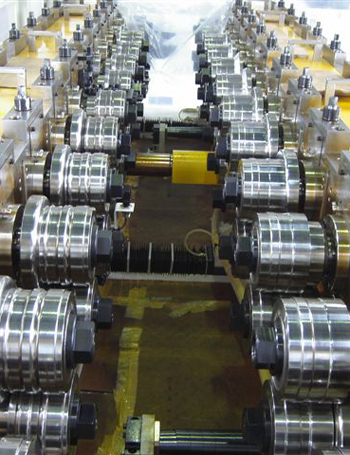

Design, production, modification, repair, and maintenance of roll formers
The Industrial Machinery Division takes over ample expertise, data, and experienced engineers from Toa Koki, a world-renowned former manufacturer, to meet the diverse requests of customers.
Overview and characteristics of roll forming
Roll forming is a method of forming flat element sheets into plate materials with intended cross sections by feeding metallic element materials into multiple forming rolls aligned in tandem and successively bending them in the cross direction.
Overview and basic features of roll forming equipment
1) Applies bending force to the element sheet in the lateral direction to form the required cross section of the product.
2) Feeds the element sheet at a constant speed to perform successive processing.
3) Applies necessary force for deformation to the element sheet in order to give a right angle to the product.
Roll forming requires the processes mentioned above. A roll former normally consists of a bed, stands, a rolling mechanism, a roll shaft, bearing chocks, drive shafts, drive gears, and guides.
Rolling and design technology
The most important basic technology in roll forming is the roll form design incorporated into stands.
A diagram that represents the forms of individual rolls on the same coordinate axes is called a roll flower. Its design is based on hands-on knowledge, standard approaches, and material deformation theory.

